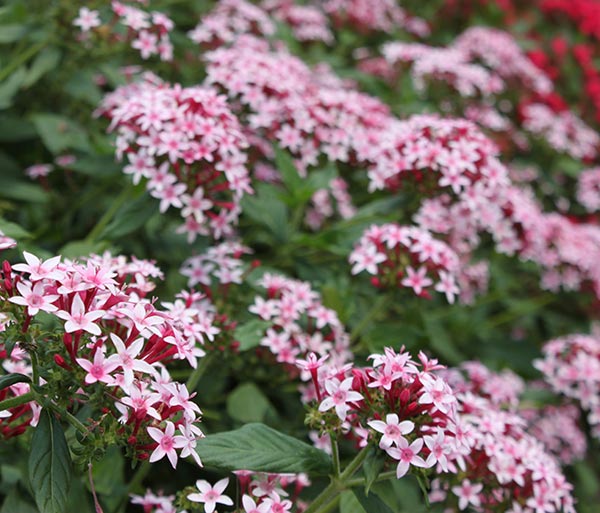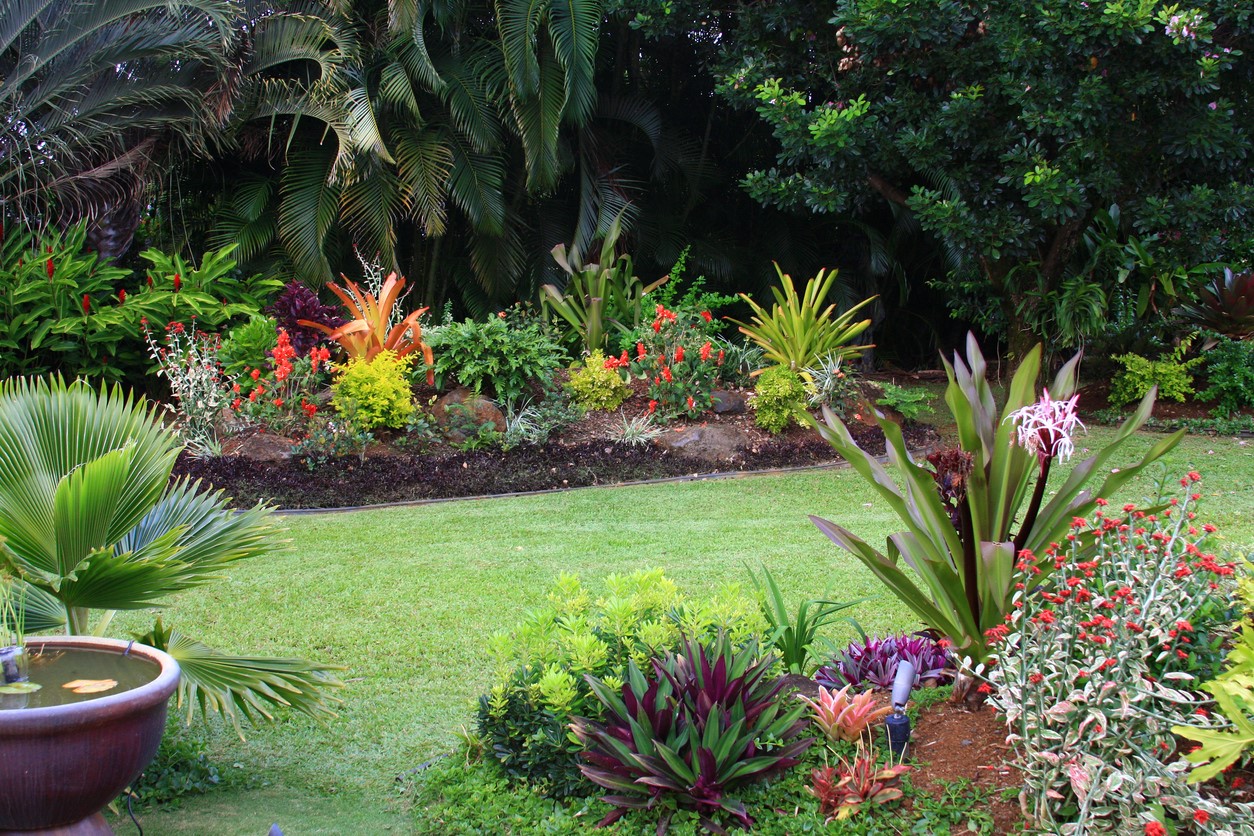If you want your Florida garden to thrive without endless work, choosing the right plants is key. The hot sun, high humidity, and occasional heavy rains can be tough on many plants, but some favorites flourish effortlessly in this unique climate.
Imagine vibrant flowers, lush greenery, and a garden that feels alive all year round—without the stress of constant upkeep. You’ll discover the best plants for Florida gardens that are both beautiful and low-maintenance. Ready to transform your outdoor space into a colorful, thriving oasis?
Keep reading to find the perfect plants that will make your garden the envy of your neighborhood.

Credit: costafarms.com
Heat-tolerant Flowers
Heat-tolerant flowers bring vibrant colors and life to Florida gardens. These plants thrive under the intense sun and high humidity. They require less water and care, making them ideal for busy gardeners. Choosing the right heat-loving flowers ensures a bright and flourishing garden all year.
Lantana
Lantana is a sturdy flower with bright, multicolored blooms. It grows well in hot, sunny spots. Butterflies love lantana, adding movement to your garden. This plant needs little water once established. It spreads quickly, covering ground and filling spaces.
Hibiscus
Hibiscus is a tropical favorite in Florida gardens. Its large, bold flowers come in many colors. It blooms almost year-round in warm climates. Hibiscus prefers full sun and regular watering. It adds a tropical feel to any garden space.
Pentas
Pentas produces clusters of star-shaped flowers in red, pink, lavender, or white. It blooms nonstop in heat and humidity. This plant attracts hummingbirds and butterflies. Pentas is easy to grow and handles dry spells well.
Salvia
Salvia has tall spikes of colorful flowers that bloom in summer. It is both drought-tolerant and heat-resistant. Salvia attracts bees and hummingbirds to the garden. Its long blooming season adds color for months.
Sunflowers
Sunflowers love the full Florida sun and warm soil. They grow tall with large, bright yellow blooms. These flowers bring cheer and attract pollinators. Sunflowers are easy to grow from seeds and need minimal care.
Coreopsis And Coneflowers
Coreopsis offers bright yellow flowers that bloom all summer. Coneflowers have daisy-like petals in pink, purple, or white. Both plants tolerate heat and dry conditions. They attract butterflies and add texture to flower beds.
Zinnia And Plumbago
Zinnia produces colorful blooms that last through the heat. It grows well in full sun and poor soil. Plumbago has clusters of pale blue flowers that attract butterflies. Both plants are low-maintenance and bloom continuously.
Firespike And Firebush
Firespike shows tall spikes of red flowers that stand out in the garden. Firebush has bright red-orange flowers that attract hummingbirds. Both plants thrive in heat and tolerate dry spells. They add bold color and texture to Florida gardens.
Colorful Foliage Plants
Colorful foliage plants bring vibrant shades and textures to Florida gardens. Their leaves display bright reds, yellows, greens, and purples. These plants add interest even when flowers are not in bloom. They thrive in Florida’s warm and humid climate. Choosing the right colorful foliage plants can brighten any garden space.
Crotons
Crotons are popular for their vivid, variegated leaves. Their foliage shows a mix of red, orange, yellow, and green. These plants prefer full sun to partial shade. Crotons grow well in Florida’s heat and humidity. They add a tropical feel and bold color to gardens. Regular watering keeps crotons healthy and vibrant.
Bromeliads
Bromeliads have striking, colorful leaves that form rosettes. They come in red, pink, orange, and green shades. These plants do well in shaded or partially sunny spots. Bromeliads store water in their leaf cups, making them drought-tolerant. They attract birds and add an exotic look to gardens. Bromeliads are low maintenance and long-lasting.
Succulents
Succulents offer unique shapes and thick, colorful leaves. Colors range from green to purple, red, and blue. They tolerate Florida’s heat and need minimal watering. Succulents thrive in well-drained soil and sunny locations. These plants add texture and contrast to garden beds. Succulents are perfect for gardeners seeking easy-care options.
Ornamental Grasses And Shrubs
Ornamental grasses and shrubs bring texture and color to Florida gardens. They adapt well to the state’s warm climate and can thrive with minimal care. These plants add movement and structure, enhancing the garden’s overall appeal.
Choosing the right grasses and shrubs helps create a lush, inviting outdoor space. They provide privacy, attract wildlife, and require little water once established. Here are some excellent options for Florida gardens.
Ornamental Grasses
Ornamental grasses add soft lines and gentle rustling sounds to gardens. They tolerate heat and humidity, making them perfect for Florida. Muhly grass, with its pinkish-purple blooms, stands out beautifully in the landscape. Blue fescue offers a cool, blue-green tone that contrasts well with flowering plants. These grasses need little water and can handle sandy or clay soil.
Bottlebrush
Bottlebrush shrubs are known for their bright red, brush-like flowers. They bloom almost all year and attract hummingbirds and butterflies. These shrubs grow well in sunny spots and tolerate drought. Bottlebrush plants can be shaped into hedges or left natural for a wild look. Their unique flowers add a tropical flair to any garden.
Coontie
Coontie is a native Florida shrub with stiff, fern-like leaves. It thrives in shade or partial sun and is very drought-resistant. Coontie is a host plant for the Atala butterfly, supporting local wildlife. Its low, spreading growth habit makes it great for ground cover or borders. This shrub requires little maintenance and stays green year-round.

Credit: www.youtube.com
Tropical And Native Palms
Florida gardens thrive with tropical and native palms that bring a lush, exotic feel. These palms suit Florida’s warm, humid climate perfectly. They provide shade, texture, and height, making gardens look vibrant and inviting.
Many palms are native to Florida, adapted to local soils and weather. They need little care once established, making them ideal for low-maintenance gardens. Their unique shapes and sizes add charm and interest to any landscape.
Florida Native Palms
Florida native palms include the Sabal Palm, also called Cabbage Palm. It is the state tree and grows well in many parts of Florida. This palm is tough, drought-resistant, and can handle cold snaps.
The Saw Palmetto is another native. It is a small, shrubby palm with fan-shaped leaves. It works well as a ground cover or border plant. Saw Palmetto adds a natural, wild look to gardens.
Tropical Palms For Florida Gardens
Tropical palms like the Royal Palm and Foxtail Palm bring a tropical vibe. Royal Palms have smooth trunks and tall, graceful fronds. They create a classic tropical appearance and grow quickly.
Foxtail Palms have bushy fronds that resemble a fox’s tail. They are striking and add bold texture. These palms prefer sunny spots and well-drained soil.
Care Tips For Palms In Florida
Plant palms in sunny or partly shaded areas for best growth. Water young palms regularly until roots establish. Mature palms tolerate drought but do better with occasional watering.
Use mulch to keep soil moist and reduce weeds. Fertilize palms with palm-specific food during growing seasons. Prune only dead or damaged fronds to keep palms healthy and neat.
Vegetables For Florida Gardens
Growing vegetables in Florida gardens offers unique rewards and challenges. The warm climate allows many plants to thrive year-round. Choosing the right vegetables helps ensure a successful harvest. Some vegetables handle Florida’s summer heat well. Others are tropical or less common but fit perfectly in local gardens. Certain spring crops can continue growing into the hot months. Understanding these categories helps gardeners plan wisely and enjoy fresh, homegrown produce.
Summer Heat Vegetables
Florida’s summer heat is intense and long-lasting. Vegetables that tolerate this heat perform best. Sweet potatoes grow well and resist heat stress. Southern peas like cowpeas thrive in hot weather. Cherry tomatoes also produce fruit despite the heat. Okra is another heat-loving vegetable. These plants need plenty of sunlight and well-drained soil. Water them regularly but avoid overwatering. Mulching helps keep the soil cool and moist.
Tropical And Lesser-known Veggies
Tropical vegetables suit Florida’s warm climate perfectly. Cassava is a root vegetable that grows well here. Malabar spinach is a leafy green that loves heat and humidity. These plants add variety and interest to gardens. They often require less care than common vegetables. Growing tropical veggies can be rewarding and unusual. They can handle Florida’s soil and weather conditions easily. Try these for a unique garden experience.
Spring Crops Extending Into Summer
Some spring vegetables continue growing into Florida’s summer. Peppers are one example that handles heat well. Eggplants also thrive from spring to summer. These crops need full sun and regular watering. They benefit from fertilizer during growth. Plant them early enough in spring to mature before heat peaks. Extending spring crops into summer increases garden productivity. Careful timing and maintenance keep plants healthy and productive.

Credit: www.stanleyhomesinc.com
Low-maintenance Garden Ideas
Creating a garden that thrives with little effort suits many Florida gardeners. Low-maintenance garden ideas reduce time spent on watering, weeding, and pruning. Choosing the right plants and design can keep your garden healthy and attractive year-round. These ideas focus on natural water control and native plants that fit the Florida climate perfectly.
Rain Gardens
Rain gardens help manage water naturally in your garden. They collect rainwater runoff from roofs and driveways. This water soaks into the soil instead of causing puddles or flooding. Rain gardens use plants that love wet soil but also handle dry spells well. This balance keeps your garden healthy and low-maintenance. Plants like swamp sunflower and goldenrod are perfect for rain gardens. They attract butterflies and add color without much care.
Native Plants For Water Control
Native plants are well-adapted to Florida’s weather and soil. They need less water and fertilizer than non-natives. For water control, choose plants that grow near wetlands or rivers naturally. Muhly grass and milkweed are excellent examples. These plants help soak up excess water during heavy rains. They also survive dry periods with little help. Using native plants makes your garden eco-friendly and easier to maintain.
Frequently Asked Questions
What Grows Well In A Garden In Florida?
Florida gardens thrive with heat-tolerant plants like hibiscus, lantana, pentas, salvia, sunflowers, crotons, bromeliads, succulents, and okra. Vegetables such as sweet potatoes, southern peas, cherry tomatoes, and Malabar spinach also grow well. These plants require low maintenance and suit Florida’s warm climate.
What Is The 70/30 Rule In Gardening?
The 70/30 rule in gardening means planting 70% edible crops and 30% flowers or herbs to balance beauty and productivity.
What Is The Best Low Maintenance Landscape In Florida?
The best low maintenance landscape in Florida features native, drought-tolerant plants like goldenrod, swamp sunflower, and muhly grass. Rain gardens with these plants control water naturally and reduce upkeep. Heat-tolerant options include lantana, hibiscus, pentas, and succulents, ideal for Florida’s climate.
What Plants Can Survive In The Heat In Florida?
Heat-tolerant plants for Florida include lantana, hibiscus, pentas, salvia, sunflowers, crotons, bromeliads, coreopsis, coneflowers, succulents, palms, and firebush. These thrive in high heat and humidity with low maintenance needs.
Conclusion
Choosing the right plants makes gardening in Florida easier and more enjoyable. Heat-tolerant and low-maintenance plants thrive in the Florida climate. Plants like hibiscus, lantana, and sunflowers add color and attract pollinators. Native species help your garden stay healthy with less water and care.
Remember to match plants with your garden’s sunlight and soil. A well-planned garden grows strong and beautiful all year. Start small, observe what works, and expand with confidence. Your Florida garden can become a vibrant, relaxing space with the right plant choices.

